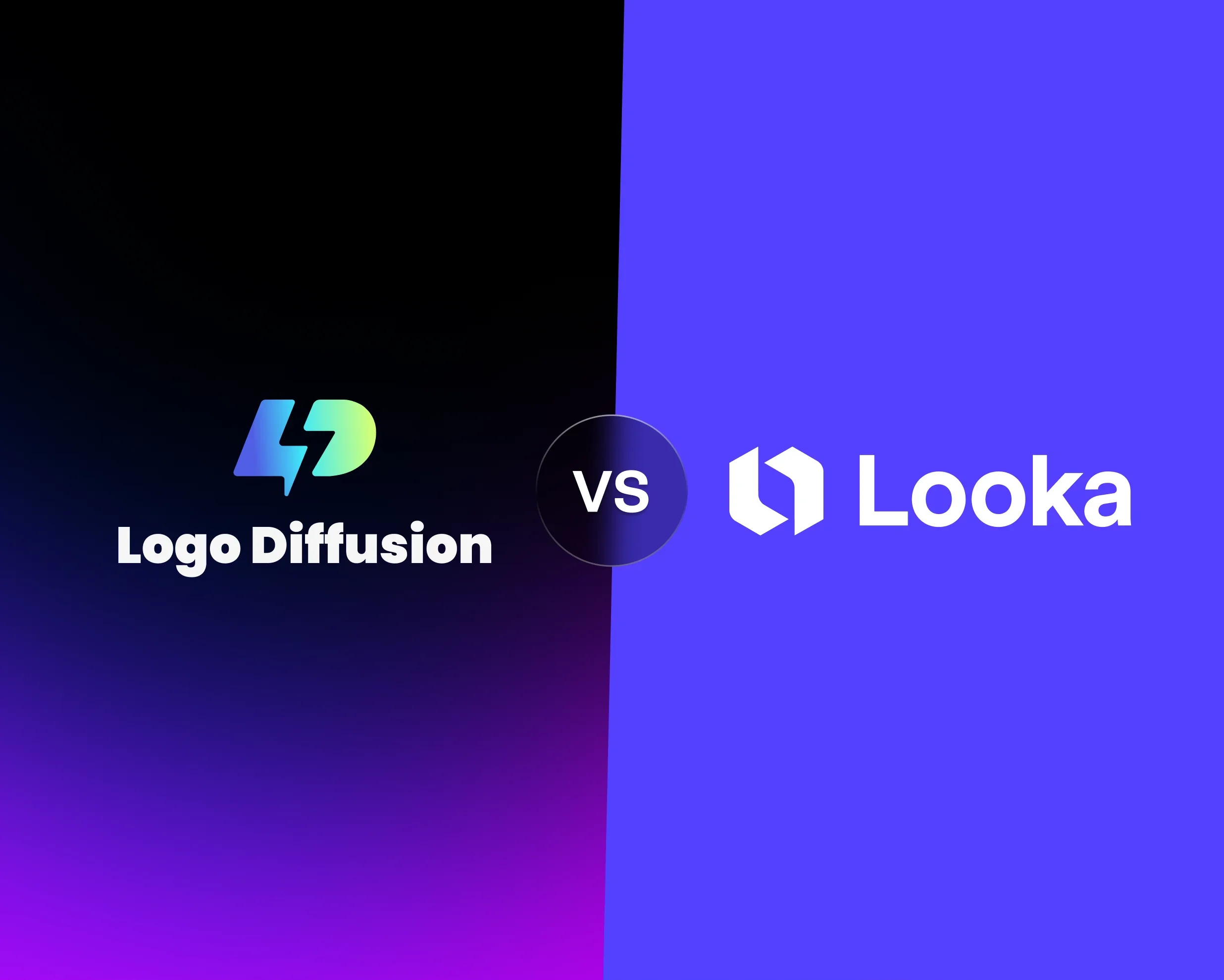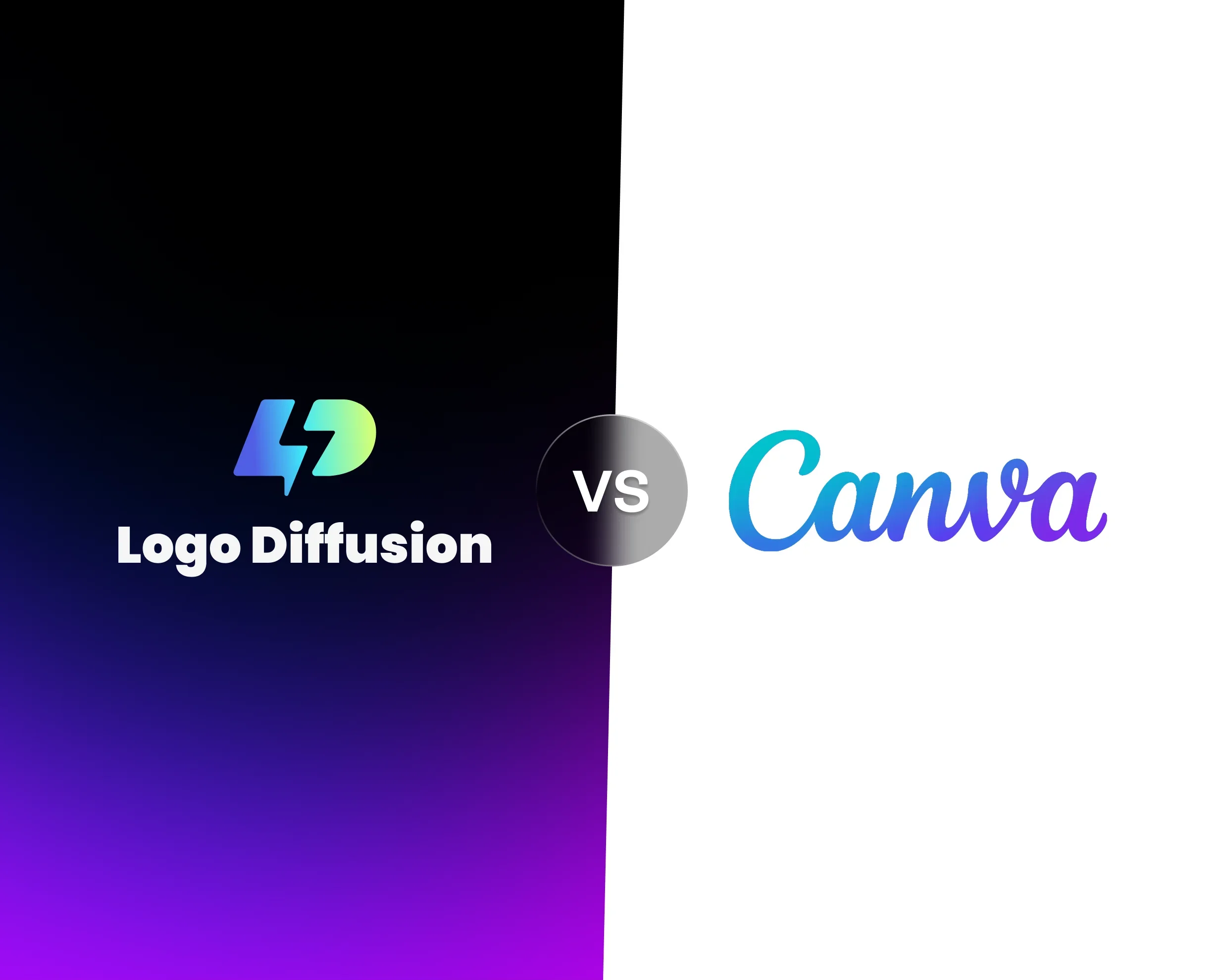

Iterative prompt refinement is the key to improving AI-generated logos. By tweaking and adjusting your instructions, you can transform rough outputs into polished designs that truly represent your brand. Here's how:
- Start with a clear prompt: Include brand details, style preferences, colors, and symbols.
- Evaluate results: Check alignment with your brand, style consistency, and design quality.
- Refine the prompt: Add missing details, clarify instructions, and fine-tune elements like colors and layout.
- Generate new versions: Test variations and use tools like style transfer for consistency.
- Track progress: Document changes to streamline future projects.
Tools like Logo Diffusion make this process easier with features like text-to-logo generation, style transfer, and vector exports. Refined prompts lead to logos that match your brand, inspire new ideas, and meet professional standards.
5 Steps to Refine Your Prompts
Creating a logo that truly represents your brand starts with mastering the art of prompt refinement. Follow these five steps to fine-tune your prompts and improve your logo designs.
1. Write Your First Prompt
Start with a clear and detailed prompt that outlines your logo's key elements. Include:
- Core brand details: Name, industry, and values.
- Design preferences: Styles like modern, minimal, or vintage.
- Color choices: Specific shades or palettes.
- Symbols or icons: Any particular imagery you want featured.
For example, instead of saying, "design a tech logo", try something like: "Design a minimalist logo for a tech startup using shades of blue and geometric shapes, featuring a stylized cloud."
2. Review the Results
Once the AI generates designs, evaluate them carefully. Look for:
- How well the design aligns with your brand.
- Consistency in style and elements.
- Placement of design components.
- Color combinations and harmony.
- Overall visual appeal.
Make detailed notes about what works and what doesn't. This will guide your next steps.
3. Refine Your Prompt
Use your feedback to adjust the prompt. Focus on:
- Adding missing details.
- Clarifying vague instructions.
- Fine-tuning style descriptions.
- Defining specific color codes or palettes.
- Tweaking layout or composition instructions.
Be precise but avoid overloading the prompt. For example, if the colors aren’t quite right, update it to say: "Use navy blue (#1B365D) as the main color with light blue accents."
4. Generate New Versions
Run the updated prompt through the AI and create multiple variations. You can:
- Generate several options using the same prompt.
- Make small adjustments to test different ideas.
- Use tools like style transfer to maintain consistency.
- Experiment with sketch-to-logo features for custom touches.
Each round of revisions brings you closer to the perfect logo.
5. Track Your Progress
Keep a record of your prompt updates to streamline future projects. Use a simple table to document changes, like this:
Tracking your iterations helps you identify what works and builds a reference for future designs.
Results of Better Prompts
As you refine your design prompts, you'll notice clear improvements in style, creativity, and technical execution.
Matching Brand Styles
Improved prompts result in logos that consistently represent your brand's visual identity. By including specific details like color codes, design elements, and style preferences in your instructions, you can create logos that align seamlessly with your brand guidelines. Logo Diffusion's style transfer feature helps maintain this alignment by applying your brand's established look across different designs.
Key benefits of precise prompts include:
- Color accuracy: Exact brand colors, not just close matches
- Style consistency: A unified design language across all iterations
- Visual hierarchy: Key elements are highlighted effectively
These consistent results open the door to exploring fresh design possibilities.
Getting New Ideas
Refining prompts encourages creative exploration. Experimenting with different variations can lead to unexpected design ideas you might not have considered. This process helps you:
- Find fresh perspectives: Each new prompt can reveal unique angles
- Blend elements: Combine different styles to develop distinct visual identities
- Test variations: Experiment with multiple designs without starting over
- Build on success: Reuse and adapt elements from past iterations for new designs
Better Logo Quality
With creative experimentation and refined prompts, Logo Diffusion helps produce logos that meet professional standards.
Technical Features:
- Vector exports for scalability and high-resolution, transparent PNGs
- Professional-grade design assets ready for use
Design Improvements:
- Sharper details and cleaner lines
- Well-balanced compositions
- Harmonized color schemes
- Proper spacing and proportions
The platform's intuitive tools let you fine-tune these aspects, ensuring your logo meets the highest standards. Whether you're working on a simple icon or a detailed illustration, each iteration brings you closer to a polished, production-ready design.
Using tools like sketching features and curated design styles, you maintain full control over the final product, ensuring it meets your brand's commercial needs with precision and quality.
Logo Diffusion Tools for Refinement

Main Platform Features
Logo Diffusion provides a suite of tools designed to make refining logo designs easier and more efficient. The platform's core feature, text-to-logo, allows users to create multiple design variations from a single prompt. Key tools include:
- Vector Export: Create scalable, production-ready assets.
- Style Transfer: Apply a consistent style across iterations.
- Background Removal: Generate logos with transparent backgrounds.
- Creative Upscaler: Enhance details up to 4x.
- Color Customization: Adjust and fine-tune brand colors.
These tools form the foundation for the practical applications described below.
Real Examples Using Logo Diffusion
Logo Diffusion combines AI features and design tools to streamline the refinement process. Here’s how its tools can be used during different stages of logo creation:
- Text-to-Logo Refinement: Start with a basic prompt like "modern tech company logo" and refine by adding specific details such as colors, styles, or layout preferences. Each iteration builds on the last, improving the design step by step.
- Style Transfer Application: If you find a visual style you like, this feature lets you apply it directly to your logo. It ensures consistency across iterations while preserving the logo's distinct characteristics.
- Sketch-to-Logo Development: Upload a rough sketch, and the platform’s AI transforms it into a polished, professional design.
Easy-to-Use Design Tools
In addition to its AI features, Logo Diffusion includes user-friendly tools to simplify the design process further. These tools are designed to help users refine their logos quickly and effectively:
- Quick Iteration Tools:
- Customizable color palettes for seamless brand alignment.
- Access to 45+ curated design styles for fast experimentation.
- Built-in sketching tools for hands-on adjustments.
- Professional Output Options:
- High-resolution exports suitable for a variety of applications.
- Vector file creation for scalable designs.
- Transparent background options for flexible use.
With over 200,000 users relying on its tools, Logo Diffusion has become a trusted platform for both beginners and experienced designers looking to refine their logos with ease and precision. Its features work together to make the entire process smooth and efficient.
Best Practices for Prompts
Balance Detail and Freedom
Striking the right balance between clear direction and creative flexibility is key to writing effective prompts. Highlight the most important design elements while leaving room for artistic interpretation.
Here’s what a well-structured prompt should include:
- Core design elements: Shape, style, and main colors
- Brand context: Industry and personality of the company
- Design flexibility: Space for creative choices
For example, instead of saying, "Create a blue and white tech logo with sharp angles and a hexagon shape", try, "Design a modern tech logo with cool tones and geometric elements." This approach communicates your vision while allowing for creative input.
Include Brand Elements
To ensure your logo reflects your brand identity, incorporate specific brand elements into your prompts. Logo Diffusion’s style transfer feature helps maintain consistency across designs while keeping your brand’s unique traits intact.
Here are some key brand elements to mention:
- Color palette: Specify colors or use hex codes
- Visual style: Modern, classic, playful, etc.
- Industry context: Tech, retail, healthcare, etc.
- Brand values: Examples include trust, creativity, or innovation
Leveraging these details helps reinforce your brand’s overall aesthetic.
Keep Prompts Simple
Once you’ve outlined the key details and brand elements, keep your prompt straightforward. Simplicity leads to better results and makes it easier to refine designs.
A helpful structure to follow:[Style] + [Industry] + [Main Element] + [Color Theme]
Example: "Minimalist tech startup logo with abstract circuit pattern in navy and silver"
After generating an initial design, you can fine-tune brand colors, themes, and layouts using the platform’s tools. This method ensures clarity and avoids overloading the prompt with unnecessary details.
With Logo Diffusion’s advanced AI and design tools, you don’t need to cram every detail into your prompt. Focus on conveying the main concept, then use the platform to tweak specifics like colors, layouts, and style variations.
Conclusion
Refining prompts step by step is an effective approach for crafting professional logos. By using clear and intentional prompts, along with thoughtful adjustments, designers can achieve logos that align closely with a brand’s identity, maintain consistent visuals, and deliver high-quality results. Each iteration builds on the last, turning initial ideas into polished, final designs.
Elevate Your Brand with the Ultimate AI Logo Maker









































